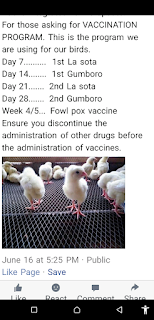There are many infections and deasese that can affect your bird growth and general health. These infections can be easily detected in many ways , if diseases or infections are detected earlier it will reduce lost in your farm.
Chicken poops ( poultry dropping) is one of the important and quick way to detect infections and diseases in your farm.
The types of poultry dropping, they are normal and abnormal poops. Although, the chicken droppings (poops) can vary in shapes, colours, textures and even odour. The Main factor that contribute to that may be as a result of diet in their feeds or diseases/infections. The atmospheric conditions may be a collaborating factor as chicken drink more water in hot weather which can make their droppings watery.
By close observation, one will be able to determine if there is health problem among the birds. This may not be 100% accurate but it majorly gives insight of necessary steps to take in poultry health management. This article will be helpful in analysis of normal droppings according to the diet and other factors for you not worry unnecessarily.
Normal poultry dropping is of shade of brown, solid with a small covered white on top. The solid part is the feaces while the white part is the uric acid (urine). Other colours of droppings may range from brown to green, yellow, black, blue, orange, watery white or even red.
Below are the common colours and problems to observe in your chicken droppings (poops)
1. Yellow poop; this can possibly be caused by Coccidiosis, intestinal worms, or kidneys disease. It is most likely to be caused by intakes flowers, strawberries or tomatoes and feed that's highly rich with corn. If the symptoms persist after changing their feed, one can treat coccidiosis and deworm the birds. Read more on Poultry Medication And Vaccination.
2. Greenish poop, This is possibly cause by intestinal worms of Marek's disease or avian flu but the most likely causes are diet rich in vegetables, herbs, grass, weeds and plants of all kinds, if not from that, one need to treat viral infection.
3. Black dropping is possibly caused by internal bleeding while the most likely cause: Ingestion of charcoal, wood ash, dark berries. Droppings can be of blue colour due to a diet rich in red cabbage or beet. You just need to ensure that you treat your birds with coccidiostat as at when due.
4. Highly liquid white manure could be caused by fungal Infection of the Cloaca, wind gleet, kidney damage due to a too high-protein diet, stress, internal disease while most likely cause is drinking of excess water due to hot weather or eating large amounts of fruit like watermelon.
5. The possible cause of Liquid Brown droppings are Infection of e. coli or respiratory system infections such as bronchitis, so the consistency of faeces will look more of a pudding and this can occur at a frequency of once every 7-8 filing of droppings, which is quite normal. If continue for long time than normal, go for treatment of viral infections.
6. Big pile of Brown droppings occurs when a hen hatches her eggs during a long period (brooding), rather than drop a dozen of droppings per day, she will hold them off until she leaves the nest and drop a few large droppings a day. Also, the first droppings in the morning can have this look right out of the dorm. This type of dropping is completely normal.
7. Orange droppings is possibly caused by coccidiosis or lead poisoning. The probable cause is inflammation of the intestinal wall. The Orange particles are sometimes confused for blood. This situation is quite normal on occasion and subsides naturally over small period of time.
On usual occasion, there is nothing to worry about the colour and texture of poultry droppings, especially if you can identify the cause. On the other hand, there are events that you will never want to see like blood in the stool which is a clear sign of coccidiosis and/or serious intestinal illness. If you suspect this, start anticoccidiosis treatment or consult you vet doctor immediately. Other one is seeing worms in the droppings which is a serious parasite disease of the intestine. Read more on Poultry Worms.
As a farmer you should be able to know and noticed all these poops sign and able to determine what kind of treatment you quickly give to your birds.
For quick update and more on poultry farming like and follow our Facebook Page ... We materialize your satisfaction! @ backyard chicken and turkey business.










